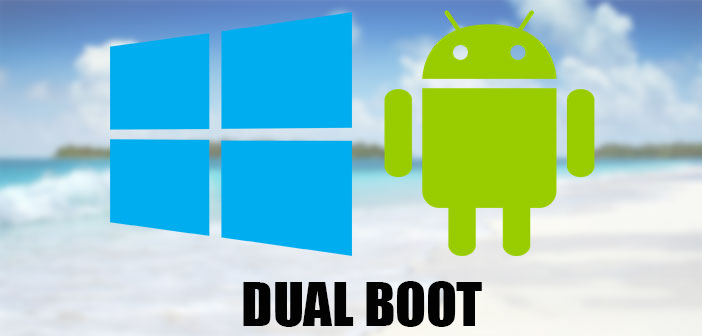The dual-boot allows you to have two different operating systems on a tablet or smartphone, the interesting concepts already seen on the PC, but it might work on mobile devices?
Dual booting is a term that, in some ways, it seems a bit belong to the past, and mean you have the possibility to install two operating systems simultaneously on the same machine. I remember a few years ago the boom of Linux on the desktop. For boom, I mean that period in which they were born various distributions much more mature than the previous competition: one for all, Ubuntu, probably the leader in open-source operating systems for computers. Together with them, appeared in the fashion of replacing Windows or Linux to support him through a game of hard disks, partitions and just dual boot.
When you start your PC, a screen is presented with the opportunity to choose whether to boot Linux or Windows. Advantages and disadvantages: the possibilities offered by the OS open-source are actually many, but to pass from one to another is a tedious task.
Same for Mac users who need the Microsoft operating system on your iMac or MacBook : Apple BootCamp offers, the canonical solution designed for dual boot, but there are possibilities far more developed and more comfortable to use, such as Parallels, which virtualizes all windows inside of Mac OS X, allowing you to work in both environments at the same time (for further discussion. We refer to our guide on how to install Windows on a Mac).
Dual booting seemed so something related to the past, but in recent months has returned to making their voices heard. It is the last hour of the news that Huawei, the Chinese big business, both ASUS – one of the leaders in the PC industry – have withdrawn their plans for the production of these hybrid dual operating systems. Who and what will have them pushed into this decision?
Overview : Products, companies, and opportunities.
The results are not a just excellent accomplices of Windows 8. The PC manufacturers are concerned about leaving their users at the mercy of an OS ” no applications “, and also provide a system for studying Android on the same machines. This new craze has also affected smartphones, with recent reports of businesses ready to support the Google OS to Windows Phone 8 in an attempt to cover the gap of services and features is unfortunately not currently offered by Microsoft and third-party developers.

ASUS Transformer was ready with his book Duet to change the cards in the tablet industry. The three leading OS ( iOS, Android and Windows 8 ) all offer very different user experiences. One of the strengths of what Microsoft is multitasking, which allows you to use up to 4 apps at the same time – look at how it works in our review of the Surface 2 if you do not have it there. The green robot provides more than one million applications, but with an interface that still does not seem mature. On this side, iOS on the iPad turns out to be much more complete experience.
Huawei, a leader in the field of medium-low, just wanted to offer its users a smartphone that offers Windows Phone 8, known for its innovative interface and user experience much less common, flanked to Android, which on phones showing his muscles and compatibility with virtually every service, app and accessory. It would have been an interesting combination, even if the idea of having to restart your terminal to run the switch is not particularly attractive.
Make sure the mechanism for sharing data between OS: I would find the same messages? My rescue of Angry Birds on Android as it would have been valid on Windows Phone? The app ” would be spoken ” or the experience would be comparable to that of having two completely different devices? Doubts that had not yet answered even months after the announcement of Duet Book, and we are afraid that the final experience would be of use in sealed rooms, with two separate OS and worlds in their own right.
The plans to produce these devices are stationary. Under pressure from both Google and Microsoft, companies have been invited to perform hazardous non-mash-up of mobile OS, which could damage the hard-won market share. There was also confusion in marketing (it’s an Android phone that also runs Windows Phone, or vice versa?) And who knows what would have been the slow update of the operating system – already are when there is only one on board.
This dual boot not to be done.
Dual booting remain confined only to the computer? Probably, for the future is not so forthcoming, yes. The manufacturers are pushing their mobile OS so that they are more and more different and unique: put them together would be a contradiction. Dual booting on the phone then it is not even comparable to that of a PC: the latter is often born out of necessity, when we use what we do not usually offer some very specific functionality – the case of Mac users, often forced to resort to dual boot when certain professional software are designed only for Windows.
It is therefore, difficult to imagine a return to be short: the companies have delivered a resounding no, and without their consent is impossible to do otherwise. Even the free market could change the situation, and we end users maybe we should rely on the champions of modding to have this opportunity.

